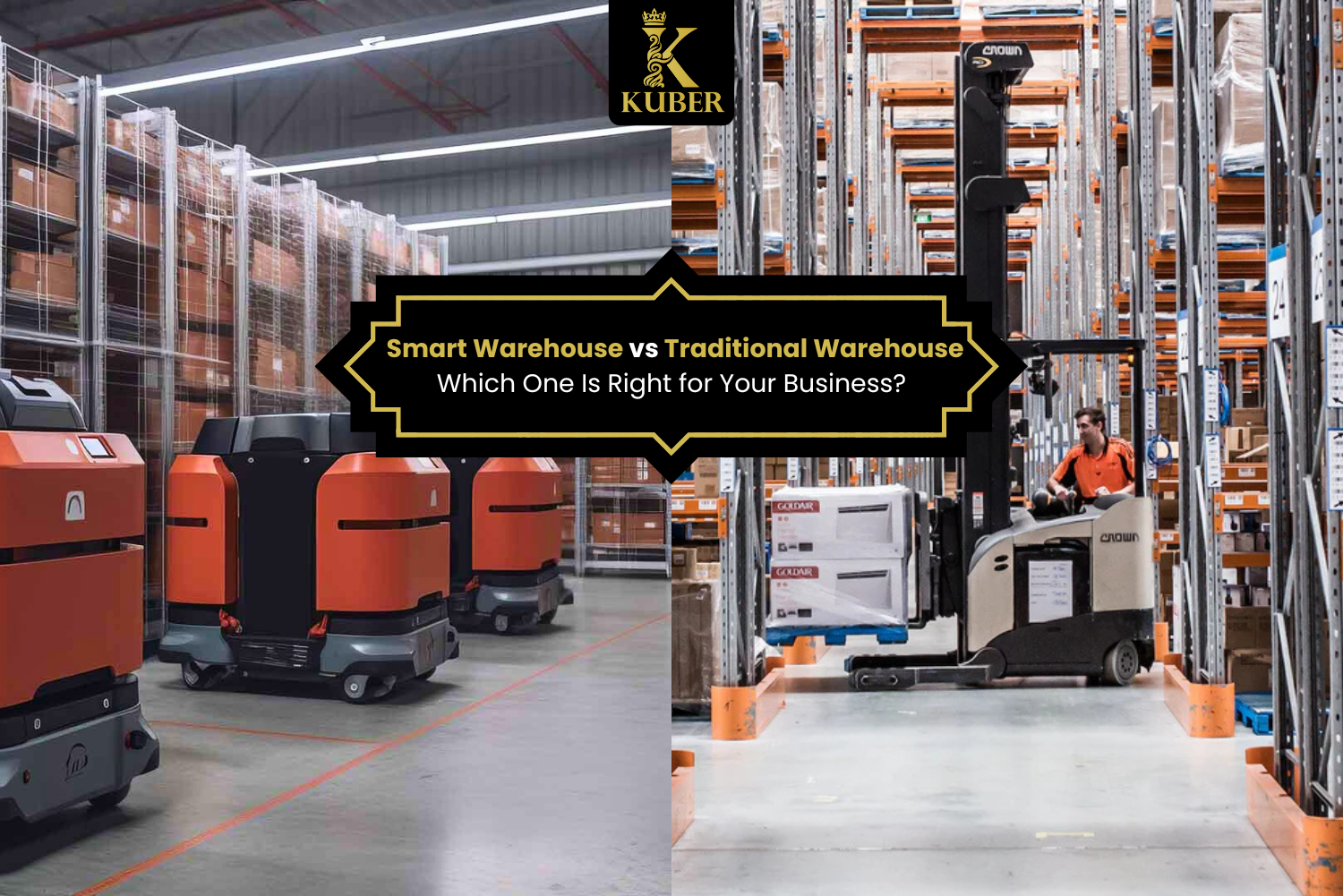In today’s competitive business landscape choosing a suitable kind of warehouse is more important than ever before. Whether you are a manufacturing company, a hospitality group, a retail firm or a logistics company, your warehouse decides how smoothly your operations are going to run. The most crucial decision is to choose between the options in the market today: smart warehouse management system and old warehouses. Both have their advantages and disadvantages. Through this blog, you will get to know the differences between the two and help you choose the right one for your business needs.
What Is a Traditional Warehouse?
A traditional warehouse is a storage facility that relies largely on manual labor and low-technology equipment. Staff use paper-based systems, forklifts, and low-tech software (if any) to monitor inventory and fulfill orders. These warehouses have existed for decades and remain popular with many small- and medium-sized enterprises.
Main characteristics:
- Manual inventory management
- Most of the work is done by human staff
- Lower installation costs
- Low-tech technology and systems
What Is a Smart Warehouse
A smart warehouse solutions uses sophisticated technologies such as automation, artificial intelligence (AI), robots and Internet of Things (IoT) devices to manage storage, inventory and order fulfillment. These warehouses reduce manual work, accelerate speed and improve accuracy.
Major characteristics:
- Automated inventory tracking
- Use of robots and conveyor belts
- Real-time reporting and data
Distinctions Between Smart and Conventional Warehouses
1. Operations and Workflow
Traditional Warehouse: Manual stock movement, paperwork, and handling of inventory.
Smart Warehouse: Robotic systems manage receiving, storage, picking, and shipping.
2. Speed and Accuracy
Traditional Warehouse: Prolonged operations with higher chances of human errors in stock records and order delivery.
Smart Warehouse: Fast operations with accuracy through robots, sensors, and software integration.
3. Investment and Setup
Traditional Warehouse: Lower initial setup expense; minimal technology requirements.
Smart Warehouse: Higher initial investment in automation, software, and technical support.
4. Scalability
Traditional Warehouse: Difficult to scale up quickly due to man and manual processes dependency.
Smart Warehouse: Easier to scale up with automated processes that can handle large volumes of orders quickly.
5. Real-Time Visibility
Traditional Warehouse: Low visibility; manually or in bulk updated data.
Smart Warehouse: Real-time monitoring of stock, shipments, and warehouse operations.
6. Labour Dependency
Traditional Warehouse: Highly dependent on manual labor for everything.
Smart Warehouse: Reduced dependency on labor; staff can focus on management and exception handling.
7. Business System Integration
Traditional Warehouse: Minimal or no integration with ERP, CRM, or ecommerce websites.
Smart Warehouse: Close integration with business applications, which increases cross-departmental coordination.
8. Customer Expectations
Traditional Warehouse: Finding it difficult to respond to the pressure of fast delivery and real-time updates on order status.
Smart Warehouse: Facilitates shorter delivery horizons and better customer communication.
How to Select the Right Choice for Your Business
Here are some points to keep in mind before a decision is reached:
1. Business Volume and Size
If your business is small or medium sized with limited inventory and simple processes, a traditional warehouse may suffice. However, if your business is growing very fast or you handle high volumes of products, a smart warehouse management system may be more helpful.
2. Budget
Smart warehouses require more technology and training money to be spent. But they pay for themselves in the long run by cutting down on labor needs and increasing efficiency. Clunky warehouses, while cheaper to start out with, will be more costly in the long run because they take their time and get things wrong.
3. Staff Skills
Management of a smart warehouse requires technical competence. If your employees are not ready to perform this or the training would be too much, then a regular warehouse can be easier to handle for now.
Final Thoughts
Smart warehouse solutions and normal warehouses both have their own place in the supply chain today. There is no one-size-fits-all, and it is all about your business size, budget, goals, and plans. Most companies today are moving towards smart warehouses because the obvious benefits of speed, accuracy, and scalability are too great to ignore. But to some, the traditional arrangement is a reasonable and cost-effective one.
Before you decide, think about your needs carefully and ask yourself where you want your company to stand in a few years’ time. A good decision today can lead to better growth tomorrow.








